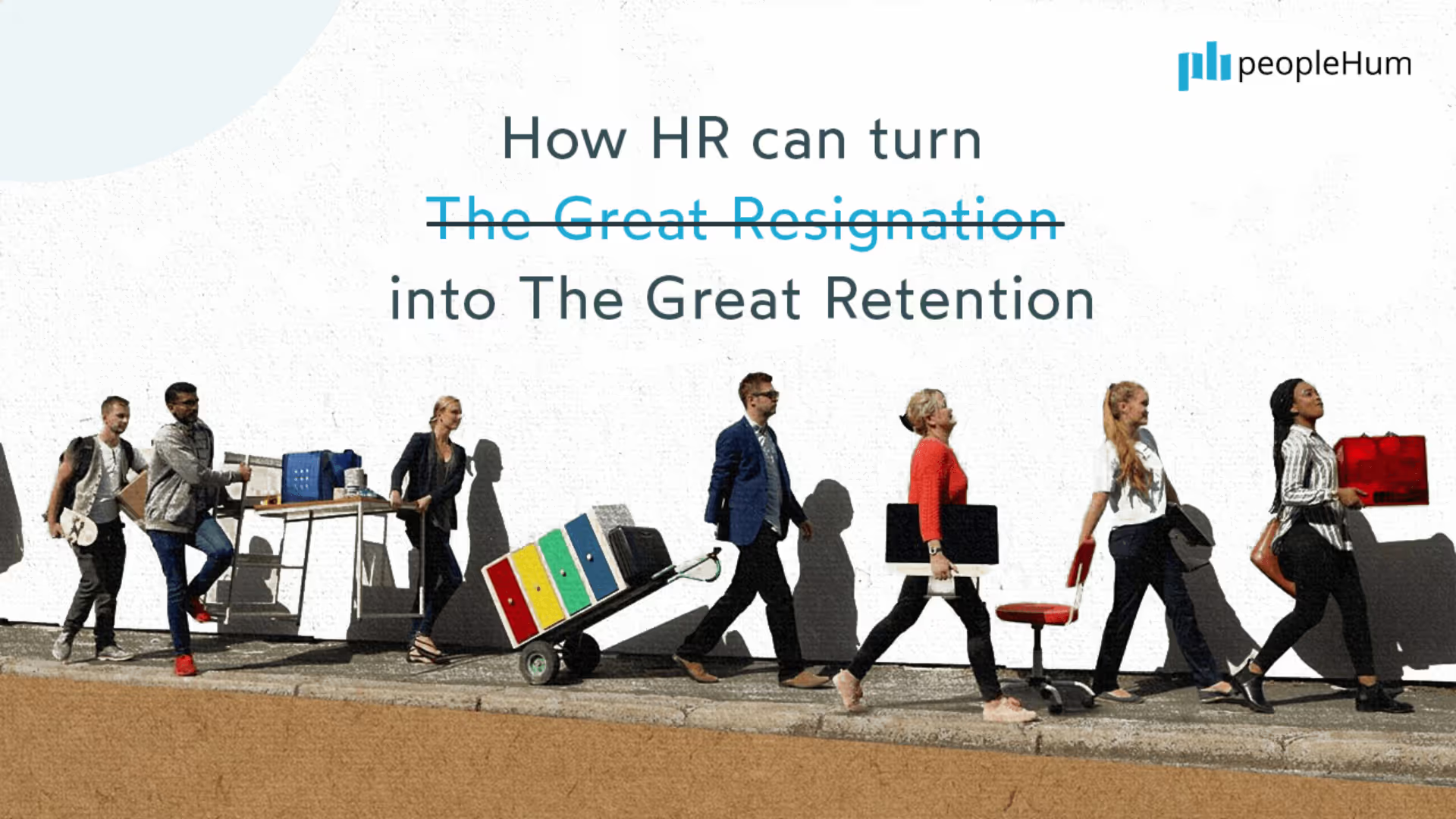During normal times, when people quit their jobs in large numbers, it signals a healthy economy with jobs in plenty. However, the current times are anything but normal. The pandemic led to the greatest recession that the US economy has ever witnessed in its history. And yet, employers are complaining of severe labour shortages.
A new study by Gallup shows that 48% of America’s working population is actively job hunting or looking out for job opportunities. With the pandemic life in the US begins drawing back, more and more people are leaving their jobs in favour of better pay, more happiness, and more flexibility. A staggering record of 3.6 million Americans resigned in May 2021 alone, leading to a record-breaking 10.9 million open jobs at the end of July.
This massive surge in resignations and job hunting as been unofficially dubbed the “Great Resignation”. Obviously, managers are anxious to hold on to people. Many that were reluctant to grant their teams more flexibility are now loosening their restrictions. But the measures are not nearly enough. Many managers believe that beating the Great Resignation is all about changing their stance on work from home rules, but what many misunderstand is that employees have much deeper concerns than coming in to the office.

What is driving the Great Resignation?
The understand the cause of these adverse statistics, one needs to better understand them. In an article published by Harvard Business Review in 2021, Ian Cook explores the reasons behind the great shift by conducting an in-depth analysis of more than 9 million employee records for more than 4,000 companies. The dataset included employees from a wide variety of industries, functions, and levels of experience.
The following are the trends that he uncovered:
1. Mid-career employees report the highest resignation rates
The study found that employees between the ages of 30 and 45 have had the greatest increase in resignation rates, with an average increase of more than 20% between 2020 and 2021; While resignation rates fell for those in the 60-70 age group.
Ian enumerated a few factors that could explain the increase in resignation which was largely being driven by employees in the particular age-group. The first possibility is that the shift to remote work led employers to refrain from hiring people with little experience as it would be riskier than usual, since new employees won’t have the benefit of in-person training and guidance. Therefore, the greater demand for experienced employees would give mid-career employees a greater leverage in acquiring new positions.
Another possibility stated by the study is that mid-career employees may have delayed transitioning out of their roles due to the uncertainty of the pandemic. Which means that the sudden surge over the past few months could be the result of more than a year’s worth of pent-up resignations.
2. Resignations are highest in tech and healthcare industries
The study conducted by Ian also identified differences in turnover rates between companies in different industries. 3.6% more health care employees resigned from their jobs than in the previous year, and in the tech industries, resignations increased by 4.5%. The study concluded that resignation rates were higher among employees who worked in fields that experiences extreme increases in demand due to the pandemic, resulting in increased workload and burnout.
What is causing the Great Resignation?

The Great Resignation isn’t just a fight about remote work. Sure, burnout is rising and is likely to keep spiking, and is a major reason why employees are handing in their notices. But it’s far from the only reason. The rising work overload is only one cause of the burnout. Additional to that is the lack of emotional support that employees need to thrive through these difficult times.
Employees aren’t just looking for higher pay, more vacation time or time-offs, or more days at home. Those perks would surely help in the short term. But as the study by Gallup stated, the Great Resignation is not an industry, role, or pay issue. It’s a workplace issue. Employees are actually questioning the meaning of the daily grind.
The highest quit rates were among the not engaged and actively disengaged employees. And disengagement is very costly. According to the Gallup study, the lost productivity of not engaged and actively disengaged employees is equal to 18% of their annual salary.
A majority of the currently employed are not engaged. Which means that new hires will most likely land on a less-than-engaging team, and may probably not stay long.
But this self-defeating cycle can be disrupted. And HR can play a critical role by effectively turning the Great Resignation into the Great Retention.
HR strategies for Great Resignation: Transforming into the Great Retention
What the employees want, and how the organization responds, matters for retention. According to a survey conducted by the Institute for Corporate Productivity, an organization which discovers and advances emerging practices in human capital, the top factors driving talent loss throughout North America are burnout, lack of advancement opportunities, compensation, and a requirement that employees return to the workplace after working remotely.
After studying the trends and the causes behind the Great Resignation, it is fair to conclude that organizations are at a very real risk of losing their high-performing talent.
If you’re an HR professional yearning to make a dent, here are the HR strategies for Great Resignation that can help improve retention rates.
1. Turn to data
In order to understand the underlying cause of turnover in your organization, it’s critical to first quantify the scope of the problem and its impact. When employees leave an organization, remaining teams often find themselves with a gap in skillsets or resources, which negatively impacts everything from quality of work and time-to-completion to bottom-line revenue. Therefore, calculate your business’ retention rate and determine the impact of resignations on key business metrics.
After identifying the scope of your retention problem, conduct a detailed data analysis to determine what’s really causing staff to leave. Explore metrics such as compensation, time between promotions, performance, training opportunities - essentially identify the trends and blind spots within the organization.
Once you’ve identified the root cause of turnover, you are well-equipped to create highly customized retention programs which will be aimed at correcting the specific issues that the workplace struggles with the most. You may even discover through the process that a lack of effective infrastructure may have been hampering your organization’s ability to make important data-driven decisions.
2. Find out what employees want
In a study conducted by the Limeade Institute where they surveyed 4,500 employee from 5 countries, it found that 56% of employees were never asked by employers about their opinion about returning to office before being called back in. It’s a classic example of how not to build trust in the workplace. And if there’s a lack of awareness of what employees want, HR can’t build the retention strategies based on their needs.
Survey employees and share the results with managers and senior executives. Disregarding the needs of your employees will set the organization up for disappointment and some very tough lessons.
3. Support long-term retention strategies
Employees expect flexibility in the workplace. HR professionals shouldn’t look at flexibility as just a temporary solution - where you just slap a bandaid on and hope the scar disappears. To support retention in the long-term, hire independent contractors to lighten the workload, which can create more flexibility and reduce employee burnout and stress.
It is essential that HR practices become people-centric. Create and employee experience where employees feel connected to the purpose of the organization, are energised by the work that they do, and where the workplace feels positive.
4. Offer the flexibility of hybrid working
Employees are not only more productive but also happier when given more flexibility. In order to maintain retention in the long term, organizations must supply benefits that really matter for employees' prolonged wellbeing. For instance, in a study by LiveCareer, researchers asked employees working remotely what would convince them to return to the office. Their responses included: better pay, more paid time off, more flexible schedule, fewer working hours, and the ability to choose their preferred place of work.
If remote working beyond the pandemic is off the plate for your organization, among the best HR strategies for Great Resignation is to offer employees the incentives that matter to engage, motivate, and retain them in the long term.




































-min%202.avif)













